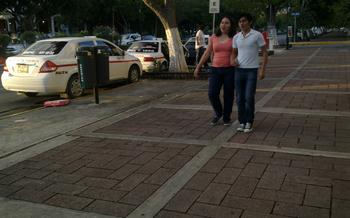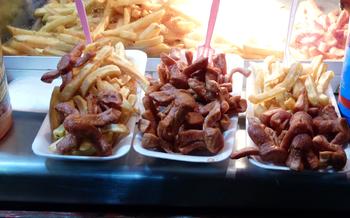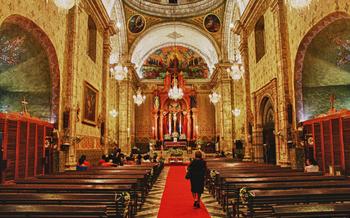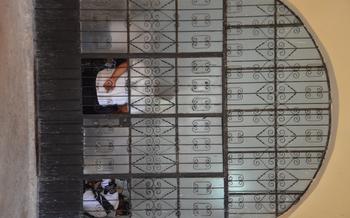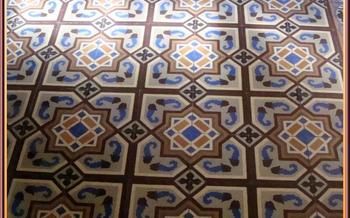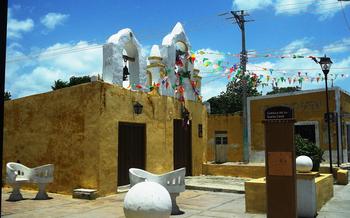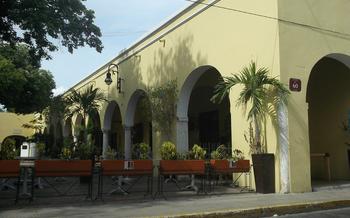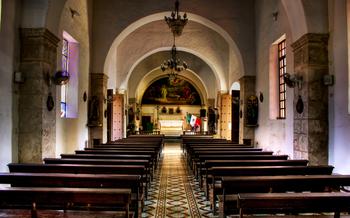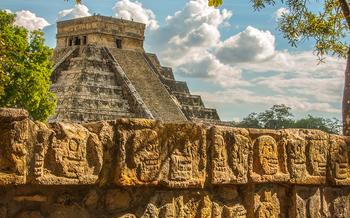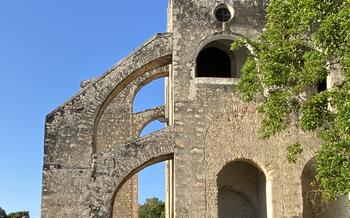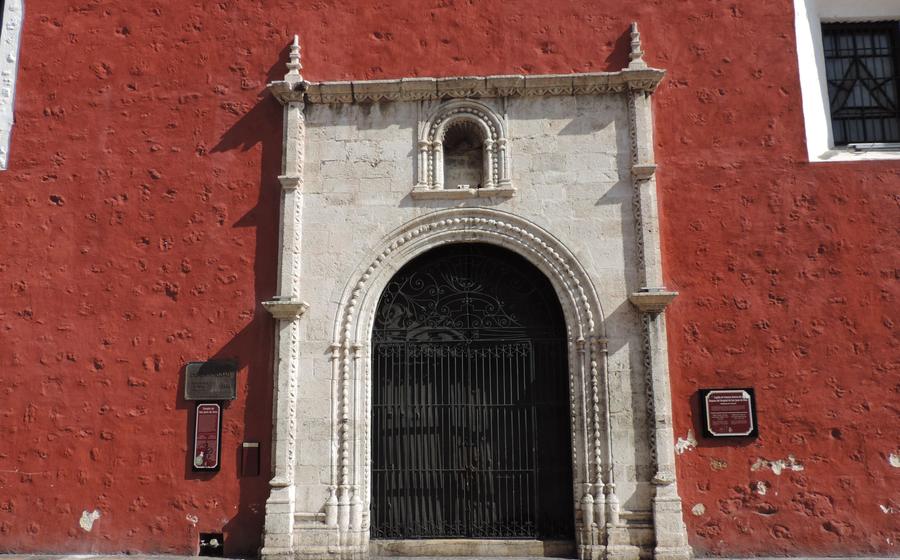
Templo de San Juan de Dios
- Step Inside the Templo de San Juan de Dios
- Marvelous Murals and Artwork
- Exploring the Neighborhood
- A Place of Reflection and Serenity
- A Unique Souvenir:
- Beyond the Temple: Exploring Merida's Religious Tapestry
- Local Festivals and Events:
- Insider Tip:
Step Inside the Templo de San Juan de Dios
Opening its doors to visitors from all walks of life, the Templo de San Juan de Dios welcomes you to explore its sacred spaces. Experience the tranquility of the temple during its opening hours, which typically fall between 8 am to 6 pm. Admission to the church is free of charge, allowing everyone to immerse themselves in its spiritual and historical significance.
As you step inside, dress modestly and respectfully, mindful of the sacred nature of the church. Guided tours are available for those seeking a deeper understanding of the temple's history and architecture. Alternatively, you can embark on a self-guided exploration, allowing you to wander at your own pace and absorb the serene atmosphere.
Capture the beauty of the temple through photography, but remember to be mindful of the privacy of worshippers. Respectful behavior is essential to maintain the sanctity of the religious space.
Marvelous Murals and Artwork
The Templo de San Juan de Dios boasts stunning murals that adorn its interior, adding to its spiritual and artistic significance. These murals, created by renowned local artists, depict biblical scenes, religious iconography, and narratives from the life of Saint John of God. The vibrant colors, intricate details, and skillful brushwork captivate the eyes and transport visitors to a realm of faith and devotion.
The murals serve as a visual representation of the church's teachings and values, inviting viewers to contemplate the divine stories and messages they convey. The symbolism embedded within each mural adds depth and meaning, providing insights into the beliefs and practices of the Catholic faith.
Beyond their religious significance, the murals also showcase the artistic prowess of the Maya people, who played a significant role in their creation. The fusion of Catholic and Maya influences in the murals reflects the unique cultural heritage of Merida and the region.
Restoration efforts have been undertaken to preserve and showcase these precious works of art for future generations. Visitors can admire the restored murals in all their glory, appreciating the vibrant hues and intricate details that bring the stories to life.
Exploring the Neighborhood
The Templo de San Juan de Dios is situated in the heart of Merida, making it an ideal starting point for exploring the city's vibrant neighborhood. Step out of the church and you'll find yourself in the bustling Plaza Grande, a historic square surrounded by colonial-era buildings. Take a moment to admire the majestic Catedral de San Ildefonso, the Palacio de Gobierno, and the Casa de Montejo, each showcasing unique architectural styles and historical significance.
Immerse yourself in the local culture by visiting the nearby markets, where you can browse colorful stalls selling traditional handicrafts, textiles, and fresh produce. Indulge in the flavors of Merida at one of the many cafes and restaurants lining the square, savoring the region's signature dishes such as cochinita pibil and panuchos.
Stroll along the pedestrian-friendly streets, discovering hidden gems like the Museo de la Ciudad de Merida, which houses a collection of artifacts and exhibits showcasing the city's rich history and cultural heritage. Take advantage of the opportunity to interact with friendly locals, who are always eager to share stories and recommendations about their beloved city.
As you explore the neighborhood surrounding the Templo de San Juan de Dios, you'll gain a deeper understanding of Merida's unique blend of colonial charm and modern-day vibrancy, making your visit a truly immersive and memorable experience.
A Place of Reflection and Serenity
Amidst the bustling streets of Merida, the Templo de San Juan de Dios offers a tranquil oasis, inviting visitors to find solace and spiritual connection. Step inside the hallowed halls of this architectural marvel, and you'll be enveloped by a palpable sense of peace and serenity. The ornate beauty of the church, with its intricate carvings, vibrant murals, and stained-glass windows, creates an atmosphere conducive to quiet contemplation and reflection. Whether you're a devout believer seeking a deeper connection with your faith or simply a traveler in search of a serene retreat, the Templo de San Juan de Dios provides a sanctuary for contemplation and inner peace. Take a moment to pause, let the tranquility of the surroundings wash over you, and allow your spirit to find solace and renewal within the embrace of this sacred space.
Photography Tips:
To truly capture the grandeur and beauty of the Templo de San Juan de Dios, consider the following photography tips:
-
Harness Natural Light: Take advantage of the natural light that filters through the church's stained glass windows. This soft, diffused light can create stunning effects, enhancing the vibrancy of the colors and highlighting the intricate details of the architecture.
-
Explore Different Angles: Don't just stick to straightforward shots. Experiment with different angles and perspectives to create unique and captivating images. Look for leading lines, such as the rows of arches or the grand staircase, to draw the viewer's eye into the photograph.
-
Respect Worshippers' Privacy: Remember that the Templo de San Juan de Dios is an active place of worship. Be respectful of worshippers and avoid taking photos that might disrupt their prayers or ceremonies. If you see someone who appears to be uncomfortable with being photographed, kindly ask their permission before proceeding.
-
Capture the Details: Zoom in on the intricate details of the church's architecture, sculptures, and artwork. These close-up shots can reveal hidden symbols, textures, and craftsmanship that might otherwise go unnoticed.
A Unique Souvenir:
Beyond the spiritual and historical significance of the Templo de who create beautiful crafts, paintings, and souvenirs depicting the church. These handmade treasures showcase the skill and artistry of Merida's talented craftsmen and women. Visitors can find unique gifts and keepsakes in nearby shops and markets, supporting local artists and preserving traditional techniques. Whether it's a colorful ceramic tile featuring the church's facade, a hand-painted wooden carving depicting the intricate details of the interior, or a vibrant textile adorned with Mayan symbols, these souvenirs offer a tangible reminder of the visit to this magnificent temple.
Beyond the Temple: Exploring Merida's Religious Tapestry
The Templo de San Juan de Dios, while a magnificent landmark in its own right, offers a gateway to exploring the broader religious tapestry of Merida. The city is home to a diverse array of churches, each with its own unique architectural style, historical significance, and cultural relevance.
Venturing beyond the Templo de San Juan de Dios, one can discover hidden gems like the Iglesia de la Tercera Orden, with its striking neoclassical facade and intricate interior adorned with colorful murals and gilded altars. The Catedral de San Ildefonso, Merida's grandest cathedral, boasts a fusion of architectural styles and is renowned for its impressive stained glass windows and vaulted ceilings.
Each church in Merida tells a story of faith, devotion, and cultural heritage. Exploring these sacred spaces allows visitors to delve deeper into the city's rich religious history and gain a profound appreciation for the diverse spiritual traditions that have shaped Merida's identity.
Local Festivals and Events:
The Templo de San Juan de Dios plays a pivotal role in the vibrant celebrations and festivals that grace the streets of Merida. During these joyous occasions, the church transforms into a hub of activity, showcasing the city's rich cultural heritage and religious traditions.
One of the most anticipated events is the annual Fiesta de San Juan, held in June to honor the temple's patron saint. The streets surrounding the church come alive with lively processions, traditional music, and spirited dance performances. Locals and visitors alike gather to pay homage to the saint and immerse themselves in the infectious energy of the festivities.
Another highlight is the solemn Procession of Silence, held during Holy Week. This poignant event sees hundreds of devotees carrying candles, silently parading through the streets of Merida. The procession culminates in the Templo de San Juan de Dios, where worshippers gather for a moving religious service.
These festivals offer visitors a unique opportunity to witness the deep-rooted faith and cultural expressions of Merida's people. By participating in these celebrations, travelers can gain a deeper understanding of the city's vibrant traditions and the enduring legacy of the Templo de San Juan de Dios.
Insider Tip:
For the most serene and awe-inspiring experience, visit the Templo de San Juan de Dios early in the morning, when the soft golden light illuminates the intricate details of its facade. As the day progresses, step inside the church to discover hidden nooks and crannies that offer unique perspectives and photo opportunities. Admire the play of light and shadow as it dances across the murals and sculptures, creating a magical ambiance.
When hunger strikes, venture into the nearby streets to savor the authentic flavors of Yucatecan cuisine. Ask locals for their recommendations, and they will gladly guide you to hidden gems where you can indulge in traditional dishes such as cochinita pibil, panuchos, and salbutes.
To fully immerse yourself in the local culture, time your visit to coincide with one of Merida's vibrant festivals. The city comes alive with music, dance, and colorful processions, and the Templo de San Juan de Dios takes center stage in these celebrations. Experience the infectious energy and cultural expressions of the city as you witness traditional rituals and performances that showcase the deep-rooted faith and traditions of the Yucatecan people.
